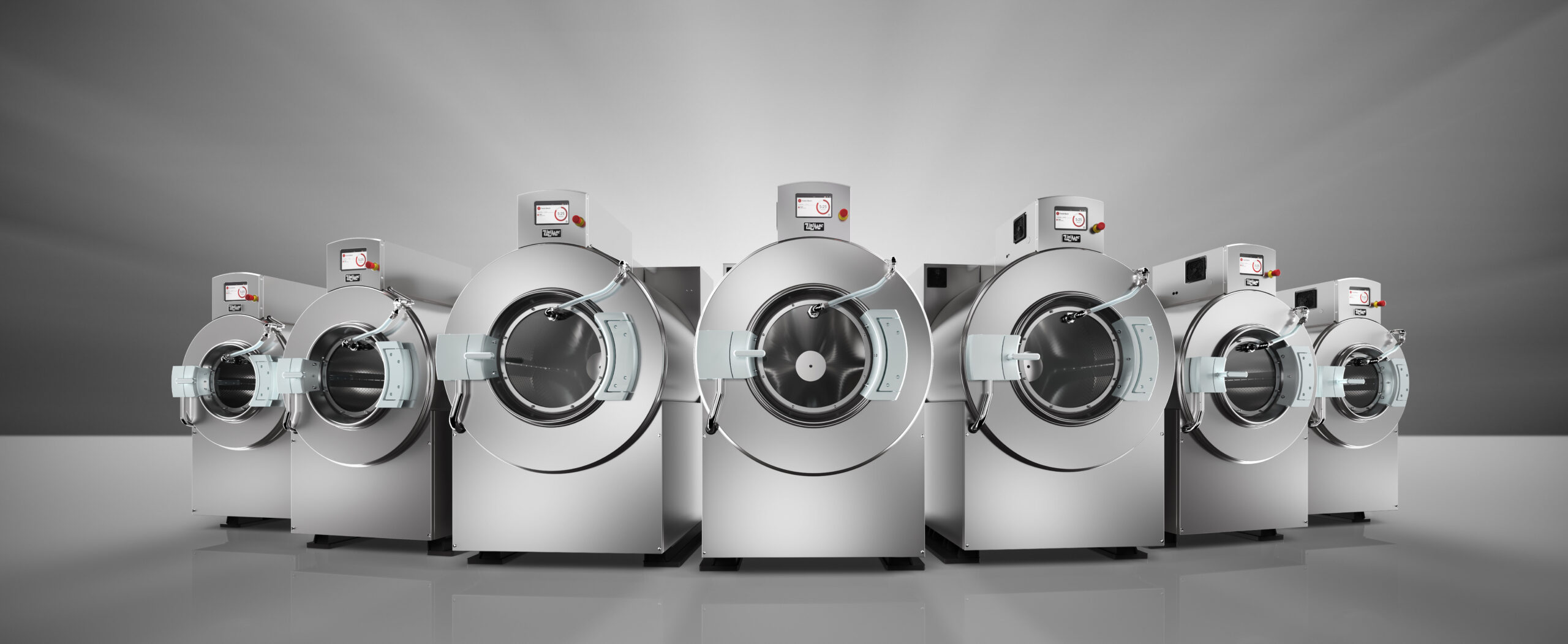Let’s talk washer-extractors

They are the backbone of your on-premises laundry– washer-extractors. While it may be easy to view washers, much like consumers buying the machines for home, as merely a commodity, the reality is quite different. All washer-extractors are not created equal. In many cases, you get what you pay for in selecting basic, inexpensive models.
To get to the solid bottom line on washer-extractors…you must start at the bottom line. You want to keep costs – utilities, labor, maintenance – in check. Therefore, it’s imperative to look for equipment and features that do just that.
G-Force. This one is simple: anything less than 300 G-Force will mean you’re handicapping your laundry with longer dry times. The most efficient way of removing water from loads is through high G-Force extraction on the wash side. Making the mistake of buying a low G-Force washer-extractor to save money upfront costs you way more over the long haul in utilities, throughput, and labor.
Flexibility. Not all loads are created equal. And whether your laundry is serving a hotel, long-term care facility or something else, there’s a good chance your requirements will change – just look t how COVID-19 changed how we did things. Programmability isn’t a nice-to-have; it’s mandatory. Greater cycle flexibility and number of cycles help you future-proof the operation and gain control to deliver excellent hygienic and quality results.
Reduce water consumption. Large capacity washer-extractors use a lot of water…but it doesn’t have to be that way. Look for washer-extractors with features to help increase efficiency. Spray rinse is one such feature – adopting a “shower” rinse technology, versus “bath” style rinses that fill the wash wheel. The spray rinse not only saves water, but also speeds cycle times, which increases throughput.
Bearings/seals. On-premises laundries are notorious for being hard on equipment. That reputation on the wash side is based on two facts –overloading of machines, and underloading. Whatever the case, both conditions are hard on bearings and seals. It’s also worth noting that a bearing job is one of the most expensive repairs your laundry will see. Protecting your business from this repair starts with selecting heavy-duty bearings and seals that offer multi-lip protection. Staff training on what a full load looks like is important, but with employee turnover always a concern make sure you invest in a rugged construction to eliminate high-dollar repair costs.
Warranty. Obviously, this goes hand in hand with the above item. However, if you are buying washer-extractors billed as industrial heavy duty, you’ll want the peace of mind that can only come from a warranty that backs up that quality claim.
Let’s face it, nothing today is getting any cheaper. The pressure is on laundry managers to identify what equipment and features position their business for success in the years to come. That means features that produce the lowest cost of ownership for the long-term.
